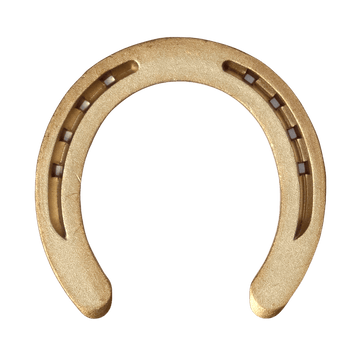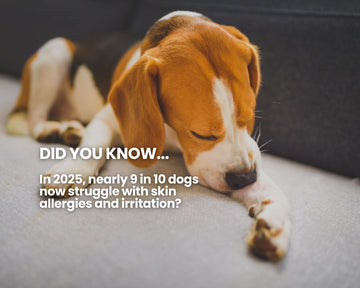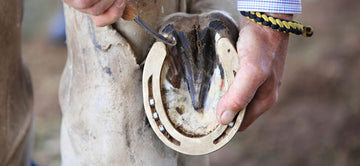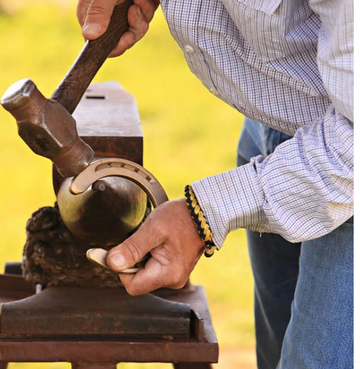Are you worried about how to trim your dog’s nails safely? Nail trimming for dogs is essential for their health. Overgrown nails can cause injuries and mobility issues.
In this article, you’ll learn why regular trims are important, how to choose the right tools, and step-by-step instructions to make nail trimming easy and stress-free.
For all your pet needs, Kawell USA is here for you!
Key Takeaways
-
Regular nail trimming is crucial for your dog’s health, preventing pain and mobility issues caused by long nails.
-
Choosing the right nail clippers is key; different styles suit different dog sizes, making the process smoother.
-
Preparing your dog properly and creating positive associations with nail trimming can significantly reduce their stress.
Why Regular Nail Trimming is Important
Regular nail trimming is not just a grooming task; it’s a critical part of your dog’s overall health. Long nails can cause a multitude of issues. For starters, they can deform your dog’s feet, injure tendons, and reduce traction, affecting their mobility. Imagine your dog trying to walk or run with nails that constantly hit the ground or curl under their paws—ouch! This can lead to discomfort and even pain while walking.
Moreover, keeping your dog’s nails trimmed helps maintain proper joint alignment and prevents potential injuries. Dogs with overgrown dog nail are at a higher risk of breaking them during activities, which can result in painful infections. Regular trimming also ensures that the quick, the sensitive part inside the nail, recedes over time, making future trims easier and less stressful.
So, how often should you trim your dog’s nails? Ideally, nail trimming should occur approximately once a month, but for less active dogs, weekly trims might be necessary. A good indicator is if you can hear your dog’s nails clicking on hard floors; it’s definitely time for a trim.
Keeping up with regular nail trims not only prevents these issues but also promotes long-term health for your furry friend.

Choosing the Right Nail Clippers for Your Dog
Choosing the right nail clipper is crucial for an effective and stress-free nail trimming session. Nail clippers come in three main styles: plier, guillotine, and scissor. Each type is designed to cut the nail tip efficiently, but selecting the right one depends on your dog’s size and nail thickness.
Scissor-style clippers are typically more suited for larger dogs due to their robust design. If you have a medium to large breed like a Golden Retriever or a German Shepherd, these might be the best option. On the other hand, guillotine-style clippers are designed for precision and are ideal for small to medium-sized dogs. These clippers have a small hole where you insert the dog’s nail, and a blade slices through the nail when you squeeze the handle.
The right size and style of clippers can make a world of difference. Clippers that are too small or dull can cause discomfort and even pain for your dog.
Professional groomers often recommend choosing high-quality clippers and keeping them sharpened to ensure a clean, smooth cut every time. Remember, the more comfortable and efficient the tool, the easier the process will be for both you and your dog.
Preparing Your Dog for Nail Trimming
Before you even think about trimming your dog’s nails, it’s essential to prepare them for the process. The first step is to introduce the nail clippers gradually. Let your dog see and sniff the clippers, so they get familiar with the tool. This initial introduction can significantly reduce fear and anxiety.
Desensitizing an anxious dog to nail trimming requires patience and repeated exposure. Start by handling your dog’s paws regularly, even when you’re not trimming their nails. This helps them get used to having their paws touched, making the actual trimming process less stressful. Use positive reinforcement, such as treats and praise, throughout the process to create a positive association with nail trimming. If your dog is particularly anxious or aggressive, consulting a professional groomer or vet tech may be necessary for safety.
One effective method is to associate the sound of the clippers with something positive. You can do this by clicking the clippers near your dog and immediately giving them a treat. Over time, your dog will start to associate the sound with positive outcomes, making them more cooperative during the actual trimming.

Step-by-Step Guide to Trimming Your Dog's Nails
Now that your dog is comfortable with the clippers, it’s time to get down to business. Here’s a step-by-step guide to trimming your dog’s nails:
First, ensure you have a good grip on your dog’s paw. Hold it firmly but gently to stabilize it and get a clear view of the nail. If your dog’s nails are dark or black, cutting should be done cautiously as the quick is harder to see. You might need to trim a little at a time to avoid hitting the quick.
Next, use sharp clippers to cut the sides of the nails at an angle, which helps the quick recede and makes future trims easier. Always cut in small increments and check the nail after each trim. If you’re unsure, it’s better to err on the side of caution and trim less rather than more. For dogs with overgrown nails, splitting the trimming session into smaller parts and trimming only a few nails at a time helps prevent overwhelming them.
Keep the clippers sharpened to prevent causing pain during nail trims, which can help maintain your dog’s comfort. If you notice your dog’s posture changing or them walking differently, it might be due to long nails, and it’s time for a trim.
Lastly, if your dog’s nails are excessively overgrown and you’re unsure how to trim them safely, it’s best to seek professional help.
What to Do if You Hit the Quick
Accidents happen, and sometimes you might hit the quick—a sensitive area inside the nail that can bleed when cut. The first step is not to panic. Keep styptic powder, flour, or cornstarch on hand to manage any bleeding effectively. Applying a small amount of these substances to the bleeding nail can help stop the blood flow.
Having the right products ready and maintaining a calm approach can make all the difference. If the bleeding persists, consult a vet for further advice. Remember, hitting the quick is not uncommon, and with the right preparation, it can be managed smoothly.
Using a Grinder for Smoother Nails
If traditional nail clippers aren’t working for you, consider using a grinder. Grinders leave your dog’s nails smooth and reduce the risk of damaging the quick, making them an excellent option for dogs averse to clipping. Introduce your dog to the grinder by initially grinding one or two nails and rewarding them with treats. Gradually increase the number as they become more comfortable.
For long-haired dogs, take precautions to avoid entangling their hair and causing skin burns. The ideal grinding speed for dog nails should not exceed 10,000 rpm to prevent overheating and injury. Using a grinding tool can make the nail trimming process less stressful and more efficient.
Making Nail Trims Less Stressful
Creating a positive association with nail trimming can make a world of difference. Allow your dog to see and hear the nail clippers frequently to reduce their anxiety. Praise your dog and reward them with treats during and after the nail trimming to encourage positive behavior. Treats can make the experience more pleasant for your dog and less stressful for you.
Breaking the nail trimming process into smaller sessions can prevent overwhelming your dog. If your dog gets too anxious, try letting them lick peanut butter off a silicone wall mat. This can distract them and make the experience more enjoyable.
If the process becomes too stressful for both you and your dog, seeking help from a professional groomer can provide a stress-free nail cutting experience.
Professional Assistance: When to Seek Help
Sometimes, despite your best efforts, you might feel uncertain about trimming your dog’s nails. In such cases, it’s always best to consult a professional. Dogs with medical issues affecting their nails, like infections, should be taken to a veterinarian for nail trimming.
If you hit the quick and the bleeding does not stop, a vet should be consulted. When in doubt, seeking professional help ensures your dog’s safety and well-being.
Summary
Nail trimming is an essential part of dog care that ensures your furry friend’s health and comfort. From choosing the right clippers to preparing your dog and managing mishaps, each step is crucial for a stress-free experience. Regular nail trims prevent various health issues and make future trims easier.
By following these tips and knowing when to seek professional help, you can make nail trimming a routine rather than a chore. Your dog will thank you with healthier paws and a happier demeanor.
Along with nail trimming, make sure to check out our pet shampoo for even more dog grooming needs.
Frequently Asked Questions
How often should I trim my dog's nails?
You should aim to trim your dog's nails about once a month, or weekly if they're not very active. Keeping them short helps prevent discomfort and injury!
What type of clippers should I use for my dog?
You should use scissor-style clippers for larger dogs and guillotine-style for smaller to medium ones. It’ll make grooming a lot easier and more comfortable for your pup!
How can I make my dog comfortable with nail trimming?
To make your dog comfy with nail trimming, gradually introduce the clippers and reward them with treats. Regularly handle their paws so they get used to the process.
What should I do if I hit the quick?
If you hit the quick, the best move is to apply styptic powder, flour, or cornstarch to stop the bleeding, and just take a deep breath. Staying calm will help you handle it better!
When should I seek professional help for nail trimming?
You should definitely seek professional help if you’re unsure about trimming your dog's nails, if they have any medical issues, or if the bleeding won’t stop after hitting the quick. Better safe than sorry!










